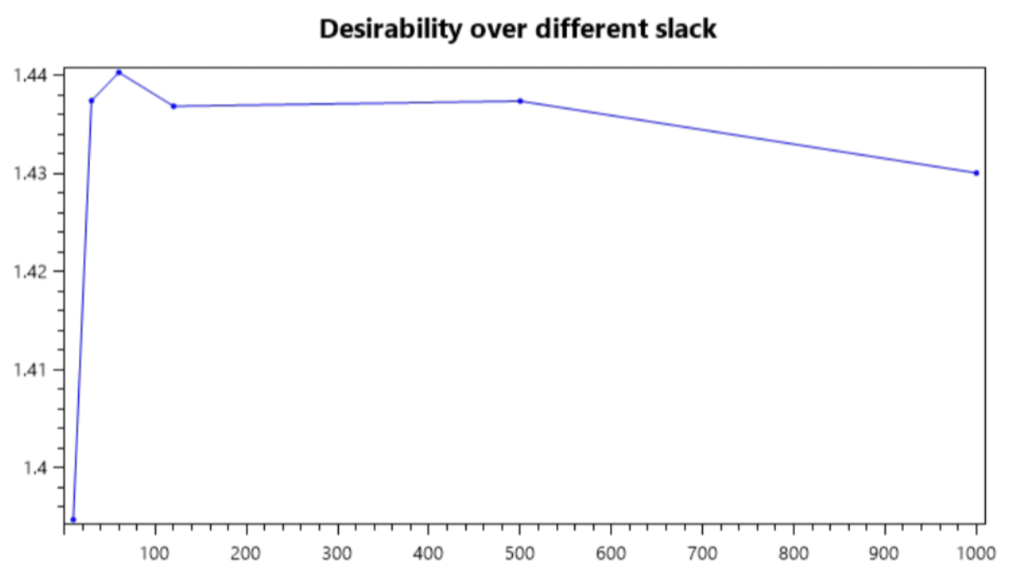How Two Queensland Students Helped Build a Journey Planning Algorithm That Outsmarts Google
21/03/2022
Written by Frederic Kalinke
Following SilverRail’s acquisition of Jeppesen’s Brisbane-based Journey Planning platform in 2013, our team ‘Down Under’ continues to enjoy the city’s bustling atmosphere and maintains strong ties with many of the founding members who helped to drive the area’s thriving technology scene.
Today, our Brisbane office is home to over 22 SilverRailers and serves as a hotbed for emerging talent across the state. Not only are we passionate about the opportunity to make rail and other ground transportation easy through innovative software solutions, but we’re also committed to identifying the next generation of engineering talent who have big ideas about the future of mobility.
One such example is our longstanding affiliation with the University of Queensland. Our annual internship programme invites burgeoning software engineers and mathematical maestros to apply for an intensive eight-week internship programme that focuses on solving real-world problems — providing the perfect springboard for a career in software development.
SilverRail’s University of Queensland Internship Programme
For the last seven years, SilverRail’s collaboration with the University of Queensland has seen some of the brightest young minds apply their theoretical skills to complex technical challenges.
From creating a Java programme and accompanying app in 2018 that tackled London’s Tourist Trip Design Problem (TTDP) to improving the performance of an intensive data processing procedure in 2020 that reduced SilverRail’s running costs, our interns continue to enrich our product innovations with fresh thinking and novel approaches.
For our 2021-2022 cohort, we were delighted to welcome University of Queensland students, Emily Jones, studying Mathematics and Samuel Jacobi, studying Computer Science with Maths. Throughout the process, Emily and Samuel received ongoing mentorship from SilverRail engineers, first-hand training across a suite of industry tools, and the opportunity to pitch their findings in front of C-level decision-makers.
What Were Emily & Samuel Working On?
While many internship programmes have earned the reputation of doing little more than honing an intern’s tea-making skills or finessing their photocopying prowess, an internship at SilverRail brings a whole new level of intensity and responsibility to the table.
After welcoming Emily and Samuel to the team and taking some time to understand their skills and interests, the Brisbane team got to work on setting their assignment. As part of the team’s mission to change the way people move through innovative search and journey planning products, the brief was to help the existing team improve the efficiency of one of SilverRail’s existing algorithms (KPaths) and to develop elegant solutions to provide end-users with optimised route recommendations.
With KPaths being a powerful asset in SilverRail’s tech stack, we were excited to give Emily and Samuel the opportunity to apply some lateral thinking to a real-world use case and inject some fresh ideas as to how we can refine end-user experiences. Their contribution to the Brisbane team’s search and journey planning technology plays a pivotal role in SilverRail’s wider company mission: to change the way people move through brilliant products that make rail and other ground transportation easy.
What Did They Discover?
After eight weeks of number crunching, scribbling on the backs of napkins and plenty of head-scratching, the Brisbane team cracked it.
While there’s never a final solution to a problem of this nature, we were blown away by Emily and Samuel’s contribution and their ability to understand the nuances of the challenges at stake.
Specifically, they worked on defining query attributes such as “reasonableness”, “desirability” and “diversity” to assess how the existing algorithm (and competitor algorithms) could filter route options to provide the most relevant results to end-users. This ability to combine technical capabilities with a practical understanding of how users might interact with the output data is extremely rare. This is a trait that we value enormously at SilverRail.
A particularly notable discovery was the relationship between slack time and the desirability of a route — where slack time describes the amount of time allowed for journeys to arrive after the earliest arrival time, whilst desirability is calculated using the following equation:

As shown in the graph below, desirability initially increased dramatically with slack because we were able to find more than one good journey that arrived after the earliest arrival time. However, as slack passed a certain point, desirability started to decrease because the algorithm generated lots of possible results for a narrow range of modal routes — providing passengers with a less diverse selection of journey options.
From this graph, we deduced that a slack value of 30-120 minutes will help to maximise desirability.

Emily and Samuel also demonstrated strong collaboration skills when they encountered a difference in opinion as to what approach they should use to adapt the existing KPaths algorithm. While many engineers would see this as a cue to part ways and prove they know best, they chose to join forces by testing both models against each other and pushing one another to maximise the efficiency of each model.
When asked about his experience of working with Emily, Samuel said the following:
“I think we worked great together, and it was good to have someone closer to my skill and experience level to share ideas with and get a sense of how multiple people can collaborate on a single project. It was also relieving to have someone equally baffled as me when we came across especially confusing or challenging problems.”
Emily also shared the following reflections:
“The best part of my internship with SRT was being able to be creative and come up with novel algorithmic approaches to solve a problem. It was a great experience, and it was excellent to have Sam as a peer intern who had skills that complimented mine. I immensely enjoyed having some of my mathematics background and programming experience converge and to learn and evolve as the weeks went by.”
Following several iterations and testing phases, the final results compared a ‘Radius Approach’ which prefiltered results by duration, the number of legs and minutes spent walking and a ‘Transport Mode Approach’ which used a grouping algorithm based on the types of transport used on a given route, against our existing KPaths algorithm.
To our delight, both approaches produced significantly better coverage results than the existing algorithm and, perhaps more impressively, showed a greater result for “desirability” than Google Maps. In this instance, “desirability” is a measure of how much journeys differ from each other — scaled accordingly to incorporate the number of options available in the returned query (see below).

While it’s still early days and more testing is needed to understand user preferences and qualify these assumptions in practice, the SilverRail team were delighted with Emily and Samuel’s input and the personal growth they each demonstrated in just eight weeks.
On top of the clear technical accomplishments of the 2021-2022 programme, Samuel also offered the following words about his first experience of life at SilverRail:
“The best part of the internship has been the people already working at SilverRail. It’s amazing how friendly and helpful everyone has been, particularly how much interest some had taken towards our project. Both of us were new to programming in C# and tackling problems like this so it was fantastic that so many people were willing to help and sit down with us for an hour while we brainstormed solutions and dug through code to find a way around a problem.”
What Happened Next?
So, what happens when two switched-on students take on the challenge of reworking a tried and tested algorithm from a global rail tech company and help them find a solution that has the potential to outsmart Google?
Well, you hire them, of course!
After successfully embedding themselves into SilverRail’s Brisbane team, we are delighted to announce that we have offered them both full-time engineering positions. We loved their can-do attitude and their ability to translate complex problems into elegant solutions that can change the way people move.
Welcome to the team.
Want to help us change the way people move?
We’re always looking for talented people who share our vision for the future of travel. We’re also a remote and flexible employer.
See our open roles and apply here.





